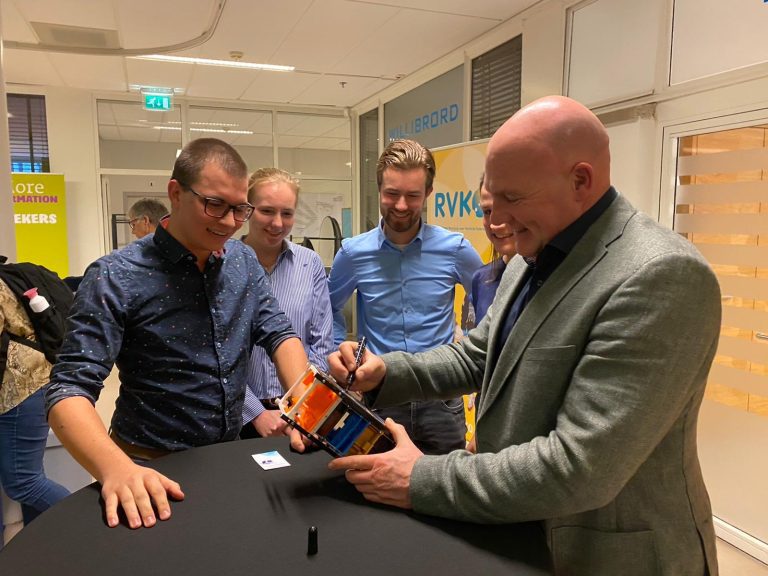Students are preparing to celebrate VSV Leonardo da Vinci’s 75th anniversary this year with a monument in space. Building will start after the corona crisis.
What do schoolchildren want to learn about space, TU students wondered (Photo: VSV Da Vinci)
Before schools were closed last week, members of study association VSV Leonardo da Vinci regularly visited primary schools to meet children. The students wanted to share their enthusiasm for space and technology. “We were wondering what they wanted to learn about space”, says Mitchell de Keijzer, bachelor commissary at the study association and secretary at the Da Vinci Satellite project. “It turned out that children mostly wanted to play”, says De Keijzer. “Based on a design competition for school children, the idea came up to develop a satellite that could throw dice.”
Don’t you need gravity to roll dice? De Keijzer explains that their cubesat will alternately let the dice float freely, and press them against the outside window. Regard it as the space version of throwing dice. There’s also a mechanism that taps the dice, pushing them into motion after they have been released. They would otherwise stay in the same position forever more.
There will be an on-board camera to film the dice. Ideally, if the satellite can be stabilised, the earth would be visible in the background. Teachers will be offered an educational package with a link or an app that will connect them to the jubilee satellite. Students are well aware that their present to the children should not burden the already heavily loaded shoulders of the teaching staff.
Pupils from the Leidse instrumentmakerschool will build the dice-rolling part of the satellite. AE students will build the other units. Parts and materials are already coming in from Dutch aerospace companies, says De Keijzer. He is confident that the assembly can start as soon everything is open again once the corona crisis is over.
The ‘Da Vinci Satellite’ is the study association’s third ‘monument. In 1955 VSV Leonardo da Vinci celebrated its 10th anniversary with a monument in Ede commemorating the first powered flight in the Netherlands. At the next lustrum (1960) they donated a concrete statue to The Hague for the spot on which the first hot air balloon had taken off in the royal gardens (1850). De Keijzer believes it should still be there.
 Astronaut Andre Kuipers gave the student project his blessing. (Photo: VSV Da Vinci)
Astronaut Andre Kuipers gave the student project his blessing. (Photo: VSV Da Vinci)This third monument will not be anchored to the earth; instead it will float far above. The students hope to hitch a ride by the middle of next year (2021).
Do you have a question or comment about this article?
j.w.wassink@tudelft.nl


Comments are closed.